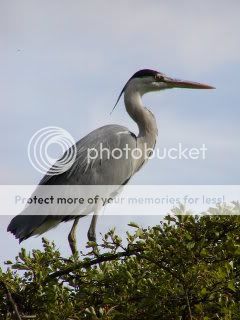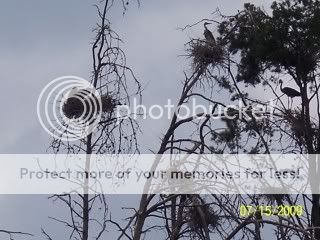A GREAT STOP FOR BIRD WATCHERS
This cache is placed within a good viewing distance to an
island used by Grey Herons as a rookery during breeding season. You
are searching for a round camoed container hidden well to keep
muggles from discovering...hopefully. Please rehide well as found
or better. And yes you probably will have to have a boat to get
this one.
Cache contains several trade items and starts out with two
TB's, but in the rush of getting out today to grab a FTF cache I
forgot to grab a pen for this contatiner. So it looks like a BYOP
is in need here. Unless one of the finders would be as so kind to
bring a spare.

The Grey Heron (Ardea cinerea), is a wading bird of the
heron family Ardeidae, native throughout temperate Europe and Asia
and also parts of Africa. It is resident in the milder south and
west, but many birds retreat in winter from the ice in colder
regions. It has become common in summer even inside the Arctic
circle along the Norwegian coast.
DESCRIPTION
It is a large bird, standing 90-100 cm tall, with a
175-195 cm wingspan and a weight of 1-2 kg. Its plumage is largely
grey above, and off-white below. Adults have a white head with a
broad black supercilium and slender crest, while immatures have a
dull grey head. It has a powerful, pinkish-yellow bill, which is
brighter in breeding adults. It has a slow flight, with its long
neck retracted (S-shaped). This is characteristic of herons and
bitterns, and distinguishes them from storks, cranes and
spoonbills, which extend their necks. The call is a loud croaking
"fraaank".

FOOD AND FEEDING
It feeds in shallow water, catching fish, frogs, and
insects with its long bill. Herons will also take small mammals,
smaller birds and small reptiles.[2] It will often wait motionless
for prey, or slowly stalk its victim.
BREEDING
This species breeds in colonies in trees close to lakes,
the seashore or other wetlands, although it will also nest in
reedbeds. It builds a bulky stick nest. They generally nest in
colonies and one nest can be used for several generations. The hens
have approximately 4 eggs, which are blue.
